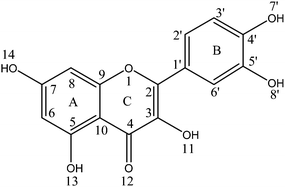 by James A. Bacon
by James A. Bacon
Hexavalent chromium, a potent carcinogen, is detectable in 90% of the North Carolina water wells sampled in a Duke University research study, and in many cases exceeds levels deemed safe for drinking water.
The chemical, made famous by the movie “Erin Brockovich,” originates not from coal ash ponds but from the natural leaching of mostly volcanic rock in aquifers across the Piedmont region, said Avner Vengosh, professor of geochemistry and water quality at Duke’s Nicholas School of the Environment in a press release issued yesterday.
Piedmont formations with volcanic rocks are common across the southeastern United States, Vengosh noted, so millions of people in regions outside North Carolina with similar aquifers may be exposed to hexavalent chromium without knowing it. Vengosh published his findings Oct. 26 in the peer-reviewed journal Environmental Science and Technology Letters.
The controversy over hexavalent chromium has roiled politics in North Carolina. In 2015 the state’s water-quality officials issued temporary “do not drink” recommendations to residents living near coal-burning plants after tests detected potentially harmful levels of hexavalent chromium in their well water samples. Because elevated levels of chromium typically occur in coal ash, many people assumed the contamination was linked to the coal ash ponds. The Vengosh study, states the Duke press release, is the first to show otherwise.
A similar controversy has raged in Virginia where the compound has been detected in well water of homes near the Bremo Power Station and the Possum Point Power Station where Dominion Virginia Power is de-watering coal ash ponds and has applied for permits to cap the dried coal-combustion residue in place.
The Duke study undoubtedly will change the tenor of the coal ash debate in Virginia, whose Piedmont geology is similar to North Carolina’s. The Duke findings are consistent with Dominion’s contention that the hexavalent chromium found in wells did not originate from its coal ash ponds. Dominion’s own measurements had indicated no such groundwater impact.
But controversy over coal ash disposal will not go away. Tests by the Potomac Riverkeeper Network have found elevated levels of lead in wells near the Possum Point coal ash ponds and also have detected potentially toxic levels of other heavy metals found in coal ash. However, Virginia Department of Environmental Quality tests have not replicated the results.
Meanwhile, the Duke findings raise issues about the safety of well water generally. Speaking about the situation in North Carolina, Vengosh said: “The bottom line is that we need to protect the health of North Carolinians from the naturally occurring threat of hexavalent chromium, while also protecting them from harmful contaminants such as arsenic and selenium, which our previous research has shown do derive from leaking coal ash ponds. The impact of leaking coal ash ponds on water resources is still a major environmental issue.”
Bacon’s bottom line: Hopefully, Vengosh’s findings will elevate the discussion about coal ash in Virginia. The most important takeaway is this: Just because a particular chemical is found in both in coal ash and the water from nearby wells, we cannot assume that the chemical necessarily came from the coal ash. Underground aquifers contain many chemicals that have leached from naturally occurring rocks and minerals. Nature is not pristine. Underground water is not as pure as distilled water. When we start measuring water quality in parts per billion, we will find all sorts of compounds we never imagined were there.
Conversely, just because hexavelent chromium occurs in natural conditions, we cannot assume by analogy that lead, selenium, arsenic or other chemicals found in well water near coal ash ponds are naturally occurring as well. We just don’t know. We need to conduct more comprehensive testing before making multi-billion dollar decisions on the best way to dispose of coal ash and/or commit ourselves to remedies that we (and our descendants) have to live with for hundreds of years.


